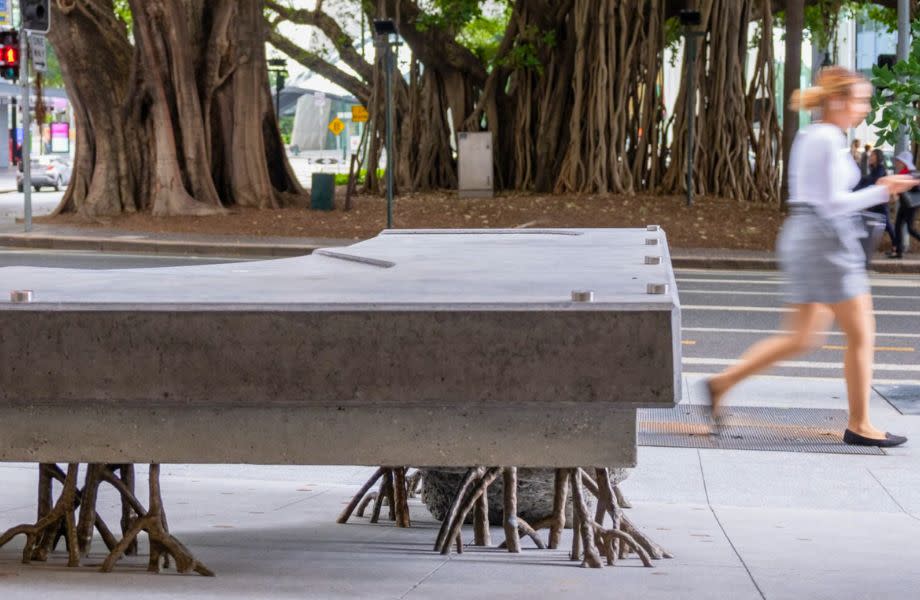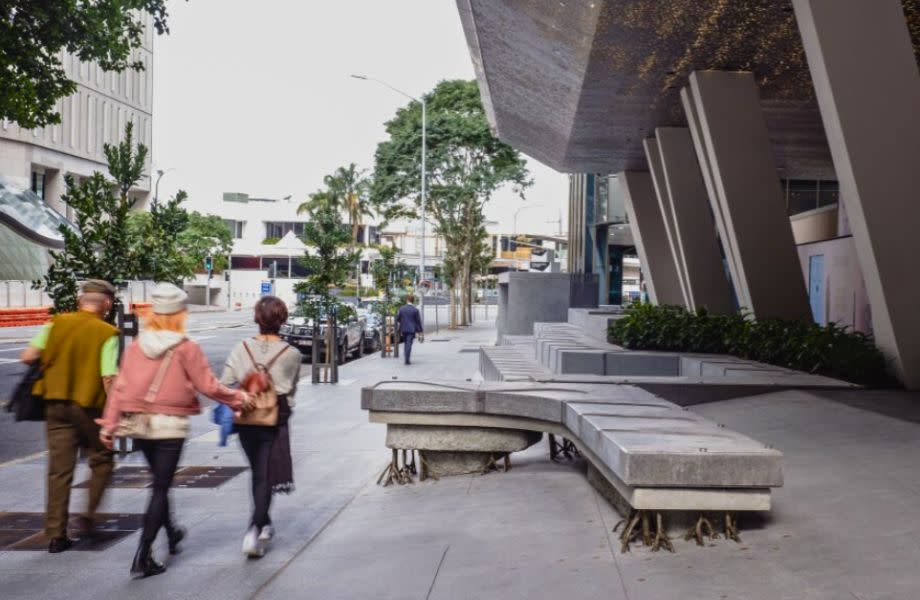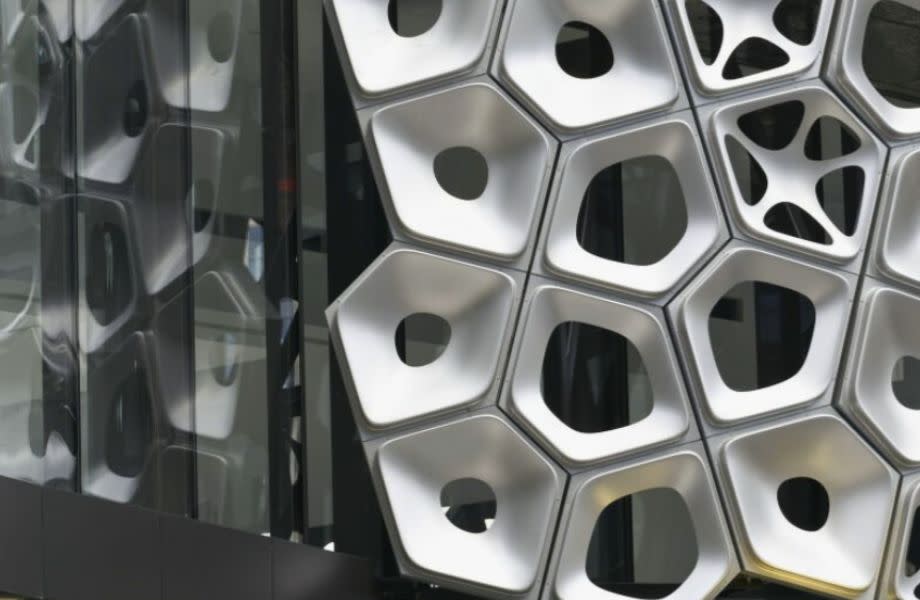How Integrated Artwork Transforms Property into Living Narrative

When public art and architecture become a celebration of our own civic identity, you know you’re on a winner.
The very playful, tongue-in-cheek public art, The Big Hose, by Tony Albert and Nell (pictured top), extends the dialogue between architecture and art.
From the architectural intent to make GOMA a Queenslander on the river, nestled underneath its cantilevered roof, the ‘front lawn’ hosts an interactive sculpture that makes magic and childhood memories larger than life, reliving the ‘big things’ we travelled to on holidays with our parents.
Of Country and in context, this counterplay of art and architecture was not a collaboration in the real sense, but shows how something extraordinary happens when collective creativity informs one another.
Artists and architects have their distinct, yet complementary, skillsets that transform the built environment from functional space into a living narrative—one that celebrates local identity, enriches community pride and connects us more deeply to place.
These collaborations bring artistic sensitivity and architectural precision together, creating outcomes that benefit not only developers and occupants but also the wider community and civic realm.
At their best, integrated artworks are not ornamental additions but essential contributors to a site’s character and story. They speak of the developer’s ethos—demonstrating investment in cultural value, sustainability and the shared identity of place.

They go beyond the brand, offering moments of meaning and discovery that elevate the experience of a space. This holistic approach resonates with how we live, work and gather, fostering a sense of belonging that nurtures community and occupant pride.
Through collaboration, artists bring conceptual depth and material experimentation, inviting new ways of seeing. Architects contribute spatial logic, technical resolution and contextual awareness. Together, they craft works that are woven into the architectural language—embedded rather than applied.
This integration results in environments that are more human, layered and connected to the rhythms of everyday life.

A subtle yet powerful example of this integration can be found in Robert Andrew’s Grounded in the Present, which was developed in collaboration with Dexus and BVN for the commercial tower at 12 Creek Street, Brisbane.
This quietly poetic work connects us to the Country beneath our feet and the layers of knowledge that have shaped it. Andrew’s practice, deeply informed by his Yawuru heritage, explores how materials carry memory and reveal time.
In dialogue with the site’s context, the work incorporates cast concrete, cast bronze and steel that will patina with age, as a grounded and harmonious moment that speaks to its broader responsibility to culture and the environment.
It is a work that invites pause, reflection and reconnection with the land.

In comparison, Alexander Knox’s The Sound That Light Makes, in collaboration with Multiple, celebrated as the podium facade of 300 George Street beside the Brisbane River, presents a bold, dynamic expression of place.
The artwork captures the shimmering qualities of light reflected on moving water, reimagining this natural phenomenon through rhythmic panels of form. The result is an ever-changing facade that engages passersby through shifts in light, animating the building and its context.
For developers, such integration signals a commitment to quality and innovation, offering a landmark that enriches both urban identity and civic experience.
These projects demonstrate how the collaboration between artist and architect transcends aesthetic appeal—it builds cultural value.
By embedding meaning and story into architecture, developers create places that feel authentic, distinctive and enduring. For communities, these works become shared reference points, connecting people to history while speaking confidently to the future.
When we integrate art into architecture, we don’t just make buildings more beautiful—we shape identity. We design with empathy, imagination and respect for place.
When thinking about the Brisbane 2032 Olympics, the future planning and legacy of this opportunity, all layers of professional collaboration—through governments, developers, engineers, planners, architects and artists—need to be focused not just on stadiums but on the connective public realm between them and the city, celebrating First Nations and regional stories.
And in doing so, we elevate our city into spaces that celebrate who we are, where we’ve come from and where we’re going next.
Author
Michael Miscamble
Senior associate | Specialty Architecture and Design | Architect at UAP
The Urban Developer is proud to partner with UAP to deliver this article to you. In doing so, we can continue to publish our daily news, information, insights and opinion to you, our valued readers.













